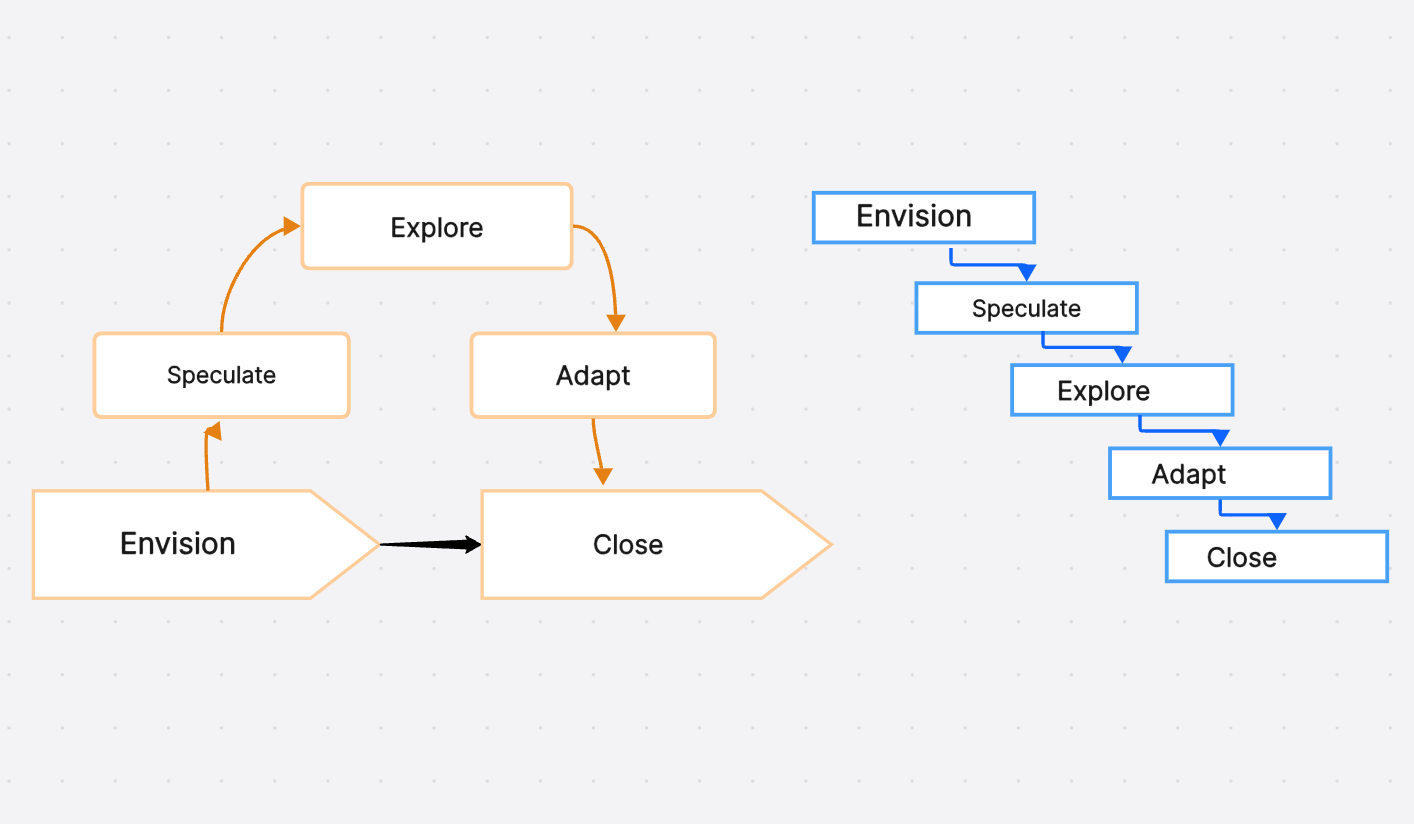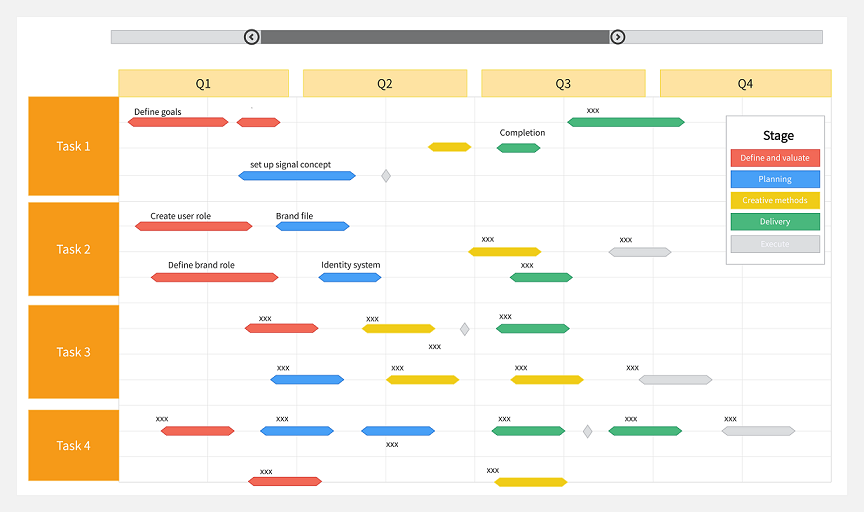In today's rapidly evolving business landscape, Agile Project Management has risen to prominence as a superior methodology for managing projects effectively. This innovative approach is designed to accommodate the unpredictable nature of the business world, allowing teams to adapt swiftly and respond to changes through incremental work periods, commonly referred to as sprints. By breaking down larger tasks into manageable units, it ensures continuous progress while maintaining high quality standards. As we navigate through this comprehensive guide, we will delve deeper into understanding this dynamic approach and how it revolutionizes project management in various industries.
Part 1. What Is Agile Project Management?
Agile Project Management is a dynamic, iterative approach to managing design and building activities. It's not just about being flexible; it's about embracing change as an integral part of the process. This method is designed to facilitate new product or service development in a highly interactive manner, fostering collaboration and continuous improvement. It emphasizes adaptability over rigid planning, allowing teams to respond swiftly to changes without derailing the entire project. By focusing on delivering value incrementally throughout the project life cycle, Agile Project Management ensures that feedback can be incorporated promptly, leading to better end results.
Part 2. What Are the Principles of Agile Project Management?
The principles of Agile Project Management, encapsulated in the Agile Manifesto, serve as a guiding light for teams seeking to implement this methodology. These principles include:
- Customer satisfaction through early and continuous delivery: This principle emphasizes the importance of delivering valuable software to customers on a regular basis, thereby ensuring their satisfaction.
- Welcome changing requirements: Agile teams are adaptable and see changes not as obstacles but opportunities for improvement and innovation.
- Deliver working software frequently: The focus is on frequent delivery of functional software, enabling quick feedback and adjustments.
- Close collaboration between business people and developers throughout the project: This fosters a culture of shared responsibility, open communication, and mutual respect.
- Build projects around motivated individuals: Agile recognizes that the most valuable asset in any organization is its people. It encourages creating an environment where individuals can show initiative and creativity.
- Face-to-face conversation is the best form of communication: Direct interaction minimizes misunderstandings and accelerates decision-making processes.
- Working software is the primary measure of progress: Unlike traditional methods that may focus on plans or documentation, agile values working products over comprehensive documentation.
- Maintain a constant pace indefinitely: Sustainable development is key in agile methodologies; teams should work at a pace that can be maintained indefinitely without leading to burnout or decreased quality.
Each principle contributes significantly to an efficient and effective project management process by fostering adaptability, continuous improvement, collaboration, and customer satisfaction.
Part 3. The 5 Phases of Agile Project Management
Agile project management is typically characterized by five distinct phases, each contributing to the overall success of a project:
- Envision - This is the initial phase where teams define the product vision and business case. It involves identifying the problem that needs to be solved, understanding customer needs, and defining what success looks like. The outcome of this phase is a clear vision that guides all subsequent work.
- Speculate - In this phase, teams develop a feature-based roadmap, release plan, and iteration plan. They speculate or hypothesize about what features will deliver the most value to customers and how they should be prioritized. This includes creating user stories, estimating effort levels, and planning sprints.
- Explore - During the explore phase, teams implement features from the release plan by priority. They work in short iterations or sprints to create potentially shippable increments of software. Regular feedback loops ensure that any issues are identified and addressed promptly.
- Adapt - Once features have been implemented, they are reviewed for adaptation opportunities in the adapt phase. Teams reflect on their performance during the sprint review and retrospective meetings and identify areas for improvement in processes or practices.
- Close - The final phase involves finalizing all aspects of the project including capturing lessons learned, conducting a final project review, celebrating successes, releasing resources back into the resource pool, and closing out all administrative matters such as contracts.
These phases provide a structured approach to managing projects while still maintaining agility at its core – ensuring every aspect of your project is meticulously planned yet flexible enough to accommodate changes as needed.
Part 4. Benefits of Agile Project Management
Agile project management offers a plethora of benefits over traditional waterfall methodologies, making it an attractive option for many organizations:
- Flexibility & adaptability to change: Agile methodologies are designed to embrace change rather than resist it. This flexibility allows teams to adapt their plans and strategies as needed throughout the project lifecycle, ensuring they can respond effectively to new information or changing circumstances.
- Increased productivity & quality: By breaking down projects into manageable units (sprints), teams can focus on high-quality development, testing, and collaboration. Short iterations also mean features are delivered incrementally, ensuring that products or services are developed faster and more efficiently.
- Improved stakeholder satisfaction: With regular opportunities for feedback during sprint reviews, stakeholders stay involved and informed throughout the development process. This continuous communication helps align expectations and increases satisfaction as stakeholders see their input being valued and incorporated into the product.
- Higher team morale: Agile methods promote a collaborative working environment where team members have more decision-making power. Teams self-organize to decide how work is divided instead of being directed by management, leading to increased job satisfaction and higher morale.
These benefits not only make agile an appealing choice but also contribute towards creating a productive work environment that values customer satisfaction, collaboration, quality, and team empowerment.
Part 5. Differences Between Agile & Waterfall
Unlike the Waterfall model's linear approach, which rigidly follows a set sequence of phases where each phase depends on the deliverables from the previous stage being completed first, Agile adopts a more fluid and flexible approach. In Agile methodology, changes can be introduced at any stage during the process without causing disruption to other tasks. This is possible due to its iterative nature that allows for continuous revisions and refinements based on feedback or new requirements. This flexibility not only accommodates change but also encourages it, viewing it as an opportunity for improvement rather than an obstacle. This fundamental difference makes Agile a more adaptable and responsive project management methodology compared to Waterfall.
Part 6. Best Agile Project Management Tool – Boardmix
Boardmix is an innovative online whiteboard tool, meticulously designed with the principles of agility at its core. It's not just a tool; it's a solution that empowers teams to manage their agile projects effectively. With its extensive range of drawing templates, Boardmix enables users to visualize complex ideas, map out workflows, and plan sprints in a highly interactive and collaborative environment. Its intuitive interface ensures ease of use, allowing teams to focus on what matters most - delivering value.
Moreover, Boardmix stands out from the crowd by offering all these features without the complications often associated with ecosystem integration. This means you can start using Boardmix right away without worrying about compatibility issues or complex setup procedures. Whether you're a seasoned agile practitioner or new to the methodology, Boardmix is equipped to support your project management needs and enhance your team's productivity.
Key features include:
- Collaborative workspace for real-time brainstorming: This feature facilitates instant communication and idea sharing, fostering a culture of transparency and collective problem-solving.
- Easy-to-use drawing tools for visualizing ideas: Boardmix comes with an array of easy-to-use drawing tools that allow users to sketch out ideas, create diagrams, flowcharts or mind maps, annotate images, and more.
- Pre-made templates tailored for agile workflows: Boardmix offers pre-made templates specifically designed for agile workflows. These include Scrum boards, Kanban boards, Sprint planners, User Story maps, etc., which can be customized as per project requirements.
These features make Boardmix an ideal tool for managing Agile projects effectively while promoting collaboration and creativity among team members.
Conclusion
Understanding and implementing Agile Project Management can dramatically enhance your team's productivity, efficiency, and overall project success. It reduces the risks associated with traditional methods like the waterfall model by promoting flexibility, continuous improvement, and stakeholder involvement. Tools like Boardmix, designed specifically with agility at its core, make this transition smoother. Don't let outdated methodologies hold you back - embrace Agile with Boardmix today! Experience firsthand how it can revolutionize your workflow and drive your team towards success.













